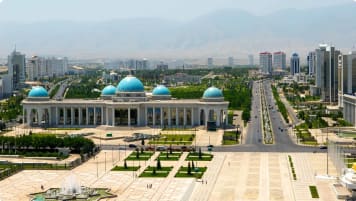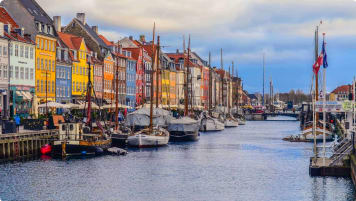The Vikings: Heathens and Traders
Vikings explored, pillaged, settled and traded their way in 300 years across the North Atlantic in the Longships to Iceland and Greenland or south through Europe/Russia to Istanbul and Persia. Learn more on a small group educational tour for senior couples and mature solo travellers interested in Viking history.
4 Oct 21 · 23 mins read

The Vikings
By Marco Stojanovik
In the early medieval period, a group of seaborne Scandinavian raiders known as the Vikings left their mark on history as brutal warriors, smart traders, and adventurous explorers. It is difficult to precisely date the beginning and end of the Viking Age, but it is generally confined to the round dates of 800 AD to 1050 AD. This begins the age a few years after the earliest recorded raid and ends it a few years before the Norman Conquest of England in 1066.
During this time, the Vikings extended their sphere of activity far beyond their homelands in Denmark, Norway, Sweden, and adjacent coastal lands around the Baltic Sea. They began by raiding coastal sites in the British Isles and across northern Europe, France, and Italy, before extending further as traders along the river systems of central Europe to Russia and Byzantium. As explorers, the ventured across the North Atlantic, settling in modern-day Iceland, Greenland, and Newfoundland (making them the first Europeans to reach North America).
This article provides a comprehensive overview of Vikings history, intended as a backgrounder for Odyssey Traveller’s Scandinavia Guided Tour for mature-aged and senior travellers, during which we uncover a Viking past in the Scandinavian peninsula. Travelling from our centrally located hotel, we catch a glimpse of the world’s biggest fjords and some fabulous scenery on a journey through the countries of Scandinavia: Norway, Sweden, and Denmark.
Much of the information in this article is drawn from Richard Hall’s Exploring the World of the Vikings, as well as Jayne Carrol, Stephen Harrison, and Gareth William’s The Vikings in Britain and Ireland.

Who Were the Vikings?
Vikings is the name given to the inhabitants of Scandinavia and the wider scattering of people linked with Scandinavia of the early medieval period. They originated from what are now the countries of Denmark, Norway, and Sweden, although centuries before their modern boundaries were finally stabilised.
However, contrary to some popular conceptions, the Vikings were not one “race” as such, linked by ties of common ancestry or patriotism. There was no particular sense of a united ‘Viking-ness’ amongst them, and not all Scandinavians were Vikings. Rather they consisted of small groups from across the region and even some peoples from further afield, including Finnish, Estonian and Saami Vikings. What did unite them – at least in the eyes of the European peoples they conquered – was that they came from foreign lands, were seen as uncivilised, and followed non-Christian faiths.
Historians refer to the Viking Age to describe the turbulent expansion of these people into Europe and Russia. In doing so, the Vikings carried out destructive and violent attacks, ranging from small scale raids against churches and monasteries to major campaigns involving thousands of warriors.
However, not all Vikings were necessarily professional privateers or full-time soldiers – or at least, not at first. Most were farmers and fishermen, who spent much of the year at home working the land or otherwise providing food for themselves and their dependents. They were also poets, composing verse and prose sags of intense power, and artists, creating works of sheer beauty. Only in the calm of summer did they rally behind some charismatic local leader and venture across the seas in order to raid, or trade, or seek out new lands to settle.
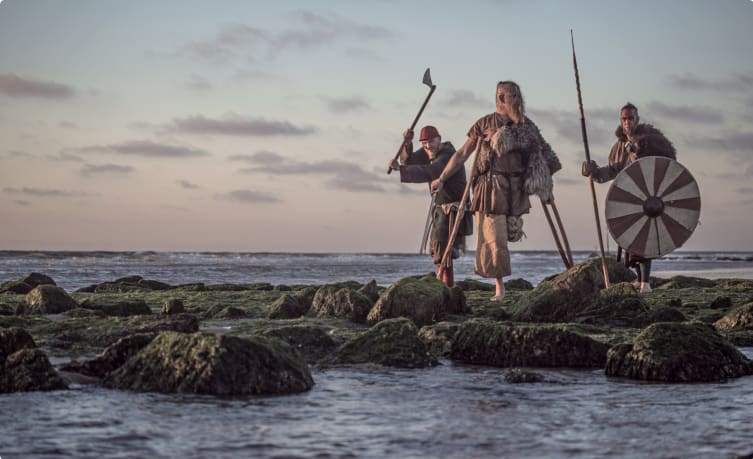
The Early Viking Age
A Viking raid on the monastery of St Cuthbert on Lindisfarne, a small island located off the northeast coast of England, is often taken as the starting point of the Viking Age. The monastery was one of England’s holiest shrines and famous throughout Europe for its knowledgeable monks and extensive library. During the attack, the invaders – probably Norwegians who sailed directly across the North Sea – killed many of the monks, throwing them into the sea, before taking off with a haul of treasure and slave captives.
Although it is likely earlier attacks in other places also occurred, this was the first precisely documented Viking raid overseas, described in dramatic terms in the Anglo-Saxon Chronical, personal letters and the famous Doomsday Stone. Earlier attacks in other places may have occurred, especially given the proximity of western Norway to the Northern Isles of Scotland, but there are no contemporary records of such.
Richard Hall writes the Lindisfarne raid is indeed a “convenient and valuable marker, not only because it is precisely dated but also because it is the external, seaborne depredations and adventures of the Vikings that particularly mark them out in what was generally a bloody and brutal period.”
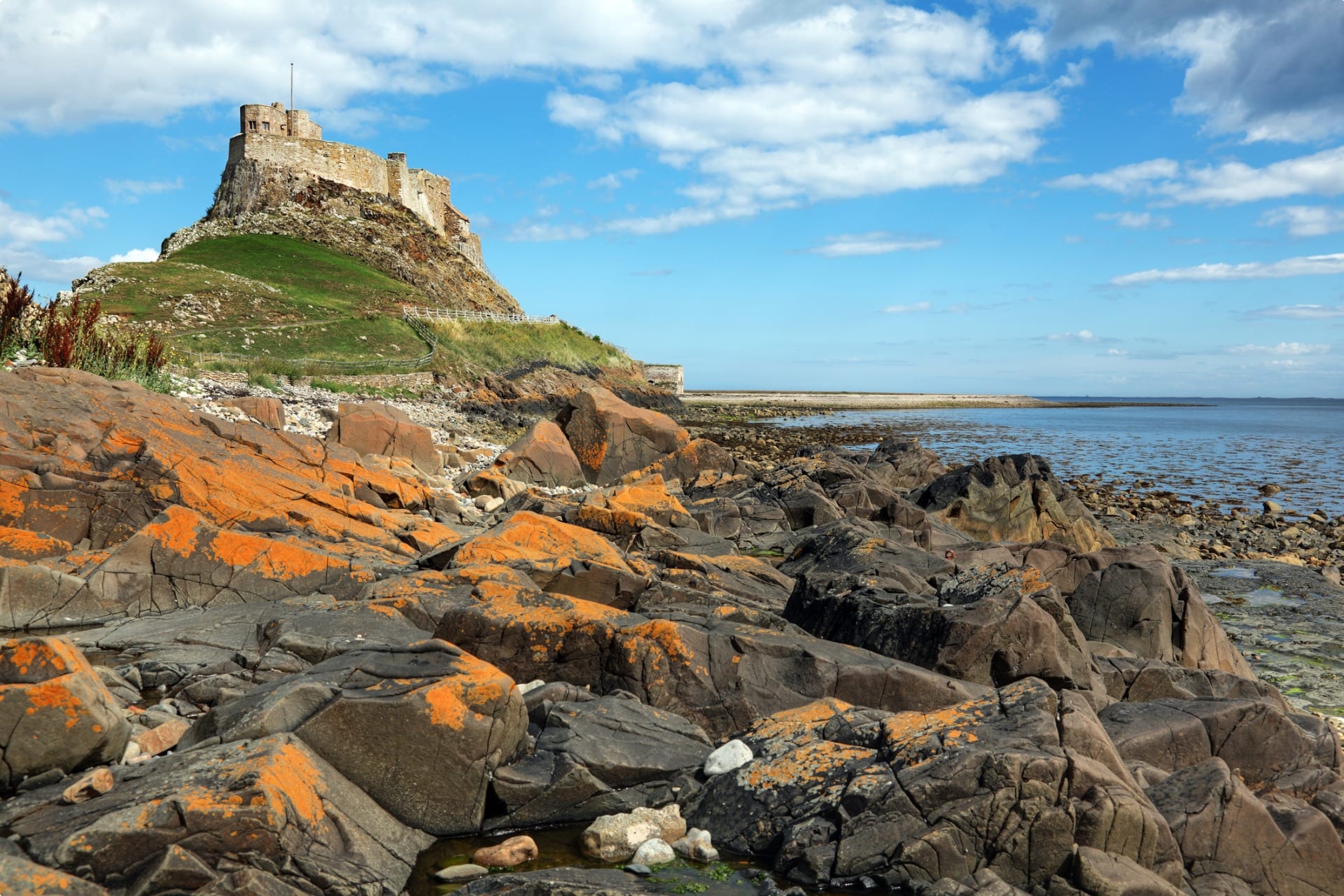
The event set the stage for further raids on coastal communities in north-western Europe over the next two hundred plus years, creating a reputation for Vikings as fierce warriors with no respect for the institutions of religion and education.
Indeed, this raid was the first of many attacks in the following years on monasteries along the British coastline, which were quickly identified as vulnerable sources of wealth. Placed in relatively remote places to avoid too much contact with the secular world, and left unguarded, they were an easy target for the raiders from the sea.
Just two years after Lindisfarne, Viking raiders struck the undefended island monasteries of Skye and Iona (in the Hebrides, Scotland), as well as Rechru (probably Raithlin Island, off the northeast coast of Ireland). The first recorded raid in continental Europe came four years later in 799, at the island monastery of St Philibert’s on Nourmourtier, near the estuary of the Loiore River.
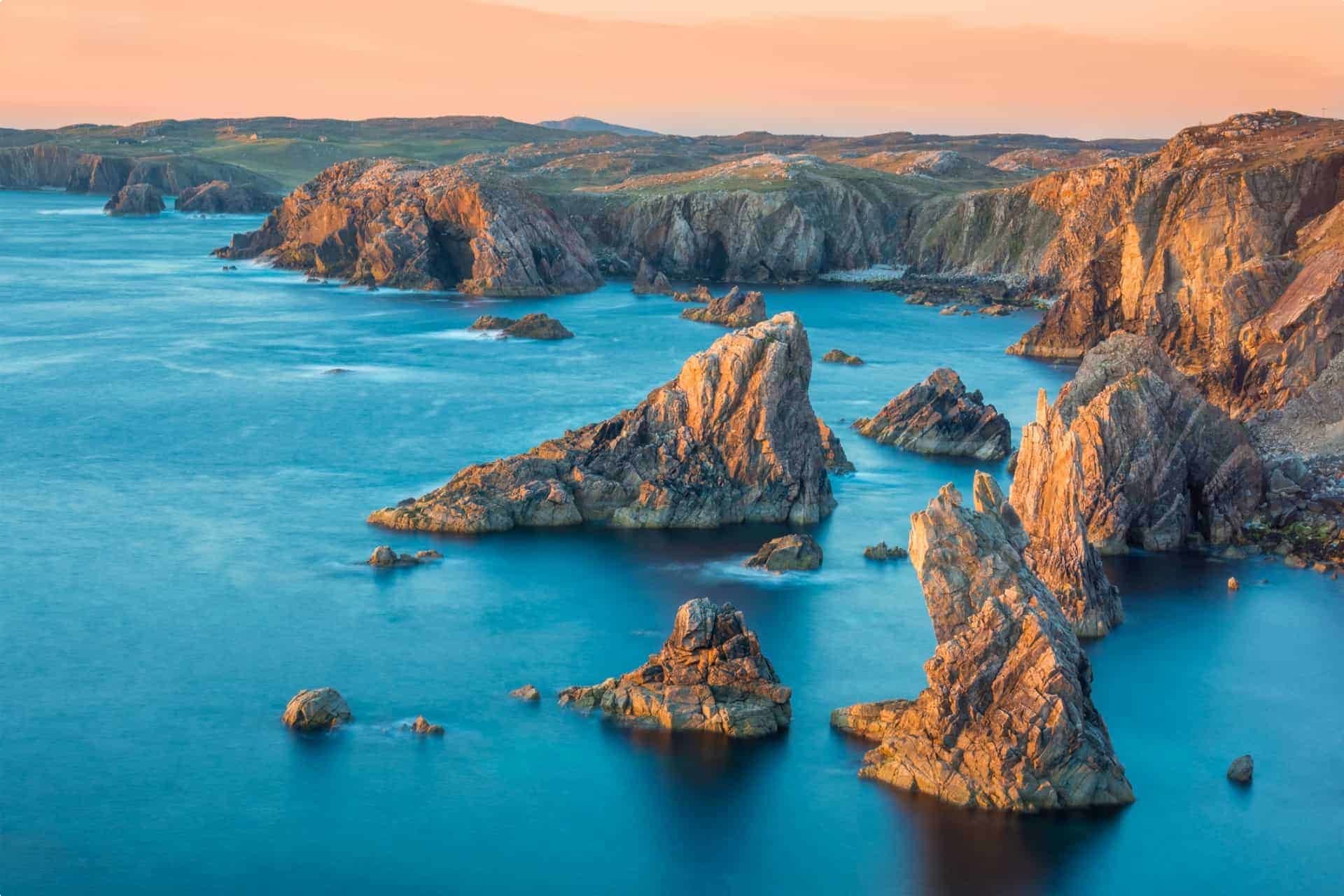
For several decades, the Vikings primarily targeted coastal regions of the British Isles and continental Europe with hit-and-run style raids. It wasn’t for forty years or so that they began to extend their activity further inland in Europe, taking advantage of internal conflicts in Francia.
The reason for the early Viking Age expansion has been long debated amongst historians and archaeologists, but there is yet no clear consensus. It has been suggested that it may have been due to overpopulation in Scandinavia, political instability as chieftains fought for dominance, or as a pagan reaction to aggressive Christian missionary activity on the continent.
The most likely reason for the early raids, however, was the acquisition of wealth. In the 7th and 8th centuries, Europe was growing wealthier, and each of the Scandinavian lands had already established trading networks with distant parts of Europe, including north-western Russia, as well as the Near East. As Scandinavian entrepreneurs then conducted further exploratory ventures to distant lands in search for profit, they probably brought back news of the riches to be found in settlements further west, thus culminating in the first raids.
Conquest in the British Isles
The Vikings’ raids were small-scale affairs at first, consisting of a few boatloads of men who would return home once they had collected sufficient plunder or encountered too strong a resistance. But from the mid-9th century onwards, the raiding parties began to increase in size, with tens or even hundreds of ships, and attacks became more frequent and concerted. Rather than simple hit and run raids on individual towns and monasteries, these raids often targeted larger areas, destabilising entire kingdoms.
At this point the period of prosperity for the Vikings in West Francia was ending, with King Charles the Bald increasing his defences, fortifying towns, abbeys, and rivers. As such, the Vikings increasingly turned their targets back to the British Isles, creating settlements there as the raids became more numerous.
They soon overran the Northern Isles of Scotland, including Shetland, Orkney and the Hebrides, along with parts of the mainland. Linguistic and archaeological evidence, particularly settlement sites and graves) point to extensive settlement in both the north and the west, with settlements essentially confined to coastal areas and clearly dispersed.
In Ireland, their activity seems to have focused on coastal towns, with little or no rural settlement. This included the founding of major trading towns, including Dublin, Waterford and Limerick. Here they established longphorts – fortified ports – from which they launched attacks elsewhere in Ireland and across the Irish Sea to England.

A wave of attacks in England after 851 culminated with the arrival of an enormous Viking force, made up of mainly Danes, known as the se mecel here (‘Great Army’), in 865. Led by a pair of warrior brothers, Halfdan and Ivar the Boneless, the Great Army campaigned for more than a decade in England, conquering three of the four main Anglo-Saxon kingdoms one by one. Northumbria fell first in 866, then East Anglia in 869, followed by the central English kingdom of Mercia in 874.
Only the kingdom of Wessex, ruled by King Alfred, was able to successfully resist. In 878 he defeated a section of the Great Army, led by Guthurm, at the Battle of Edington. Under the terms of his defeat, Guthrum was forced to accept baptism as a Christian and then leave Wessex. For his achievements, Alfred became the only native English ruler to gain the nickname ‘the Great’.
For the next 80 years England was divided. The kings of Wessex controlled the land in the south and south-west, while the Vikings controlled area in the Midlands and the north. Many Vikings lived as farmers and traders, establishing many mercantile cities that still exist today, most famously York.
In the first half of the 10th century, English armies led by the descendants of King Alfred began to take back the conquered areas of England. By 954, the last Viking king, Eric Bloodaxe, was expelled and killed and the kings of Wessex became rulers of a united England. Even so, Viking customs have long persisted there and traces of Scandinavian DNA can still be found in the region.
Expansion into Europe
Meanwhile, during the 9th century, the Vikings had expanded into continental Europe. Historical and archaeological evidence reveals their presence in modern Holland, Germany, Belgium, France, Portugal, Spain, Italy, and North Africa. Particularly brutal raids extended deep into the territory of the Frankish Empire from the mid-9th century, including the sacking of the prominent towns of Paris, Limoges, Orleans, Tours and Nimes. They also sacked the major towns of Arab-controlled Seville in 854 and Italy’s Pisa in 859.
In 911, the West Frankish king Charles the Simple legally granted the Duchy of Normandy, including the town of Rouen and surrounding territory, to the Viking leader Rollo after he besieged and almost captured Paris. In return, Rollo entered vassalage to the king and promised to deny passage to the Seine River to other raiders. The descendants of Rollo and his followers intermarries with the area’s original inhabitants to become the Normans – a Norman French-speaking mixture of Scandinavians and Indigenous Franks and Gauls.
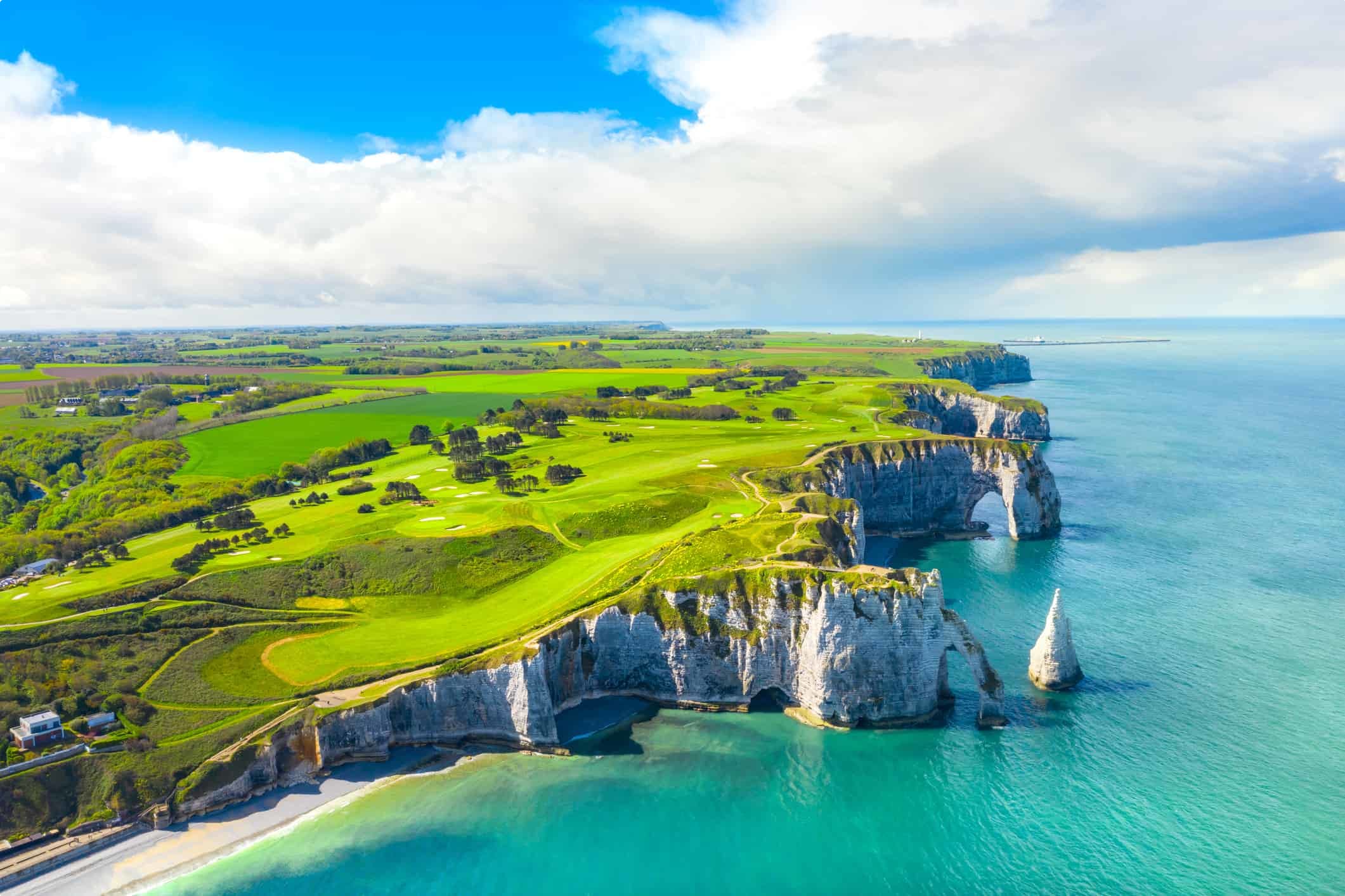
Viking settlements also expanded in the 9th and 10th centuries eastwards and southwards to coastal areas along the Baltic Sea, into modern-day Russia along inland rivers such as Staraya Ladoga and to the city of Novgorod, and along major waterways to reach as far as the Black and Caspian Seas. The Vikings who migrated into what is now Russia, Belarus and Ukraine were known as the Varangians.
For some time, the Varangian presence in Eastern Europe helped to maintain order by uniting the Slavic tribes of the region, which had been in constant warfare among each other. The Viking leader Rurik was able to successfully establish a set of trading towns and posts along the Volga and Dnieper Rivers to trade with the Byzantine Empire, and his successors then further conquered and united towns along these rivers. By the 10th century, the Varangians had begun to integrate with the local people, leading to the emergence of a new people by the end of the 12th century – the Russians.
Viking Ships
Most crucial to Viking culture was undeniably the Viking ship. Hall describes them as “critical to Viking activities and symbolic of the era… catalyst of the Viking Age”. Indeed, the development of the sailing ship in Scandinavia and the skills of the seaman gave the Vikings the tactical edge they needed for raiding, trading, and settlement across the oceans.
These ships were fast, strong enough to survive ocean crossings, had a shallow draft to also allow navigation in shallow coastal and inland waters and land on beaches, and they were light enough to be carried over land if necessary.
The Vikings’ ship-building craft was refined by 700, with the unique design element of using overlapping planks riveted together to form the hull (known as the clinker-built style). This made Viking ships lighter and far more flexible. Another substantial improvement was the invention of the keel – a structural beam that runs from the bow to the stern and sits lower than the main body of the ship. This increased speed and stability, prevented unwanted lateral movement, and made the ship capable of bearing a mast. Also, a steering oar, instead of being loose, was attached on the starboard side, which gave greater control.
Ample archaeological evidence from a range of excavated ships reveals that the use of mast and sail was commonplace by the 9th century. The use of such was revolutionary for Viking activities, reducing the effort of travel, increasing journey times, and sustaining energy levels for attacks. The sails were made from different coloured strips of material, with woollen sails commonplace, while walrus hide was a favoured raw material for making the ships’ ropes.
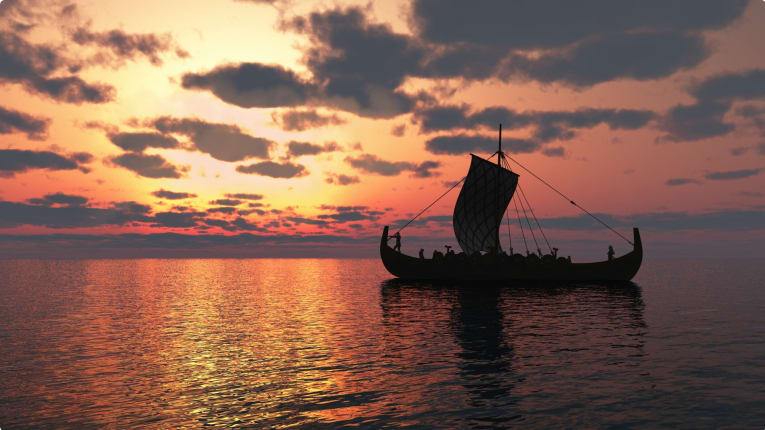
The ships of the Viking Age varied considerably in size, draught, and profile, depending on what the ship was intended for. They ranged from small, four-oared fishing boats to big-bellied cargo vessels and lightning-fast longships some 30 m (100 ft) long. Even so, they were always built be narrow in shape, with the same basic double-ended, clinker-built pattern.
The two main types were the longships for war and knarr (or merchant ships). The longships were narrow in relation to their length and had a shallow draught that allowed them to penetrate far up rivers or be easily run ashore at the outset of a raid. The knar was a wider and deeper vessel, strongly built and able to transport substantial cargoes through the North Sea, Baltic and North Atlantic.
Navigation was made possible with experience and utilising knowledge of winds, tides, directions and sailing times, accumulated over generations, rather than instruments and calculations. Coasting along within sight of land whenever possible was one method used to reach a destination. When venturing further, natural phenomena was utilised to indicate the way. Cloud formations, wave patterns, and the presence of sea birds or whales could all suggest the proximity of land, while the sun’s daily course across the sky during the day the North Star at night could aide with directions.
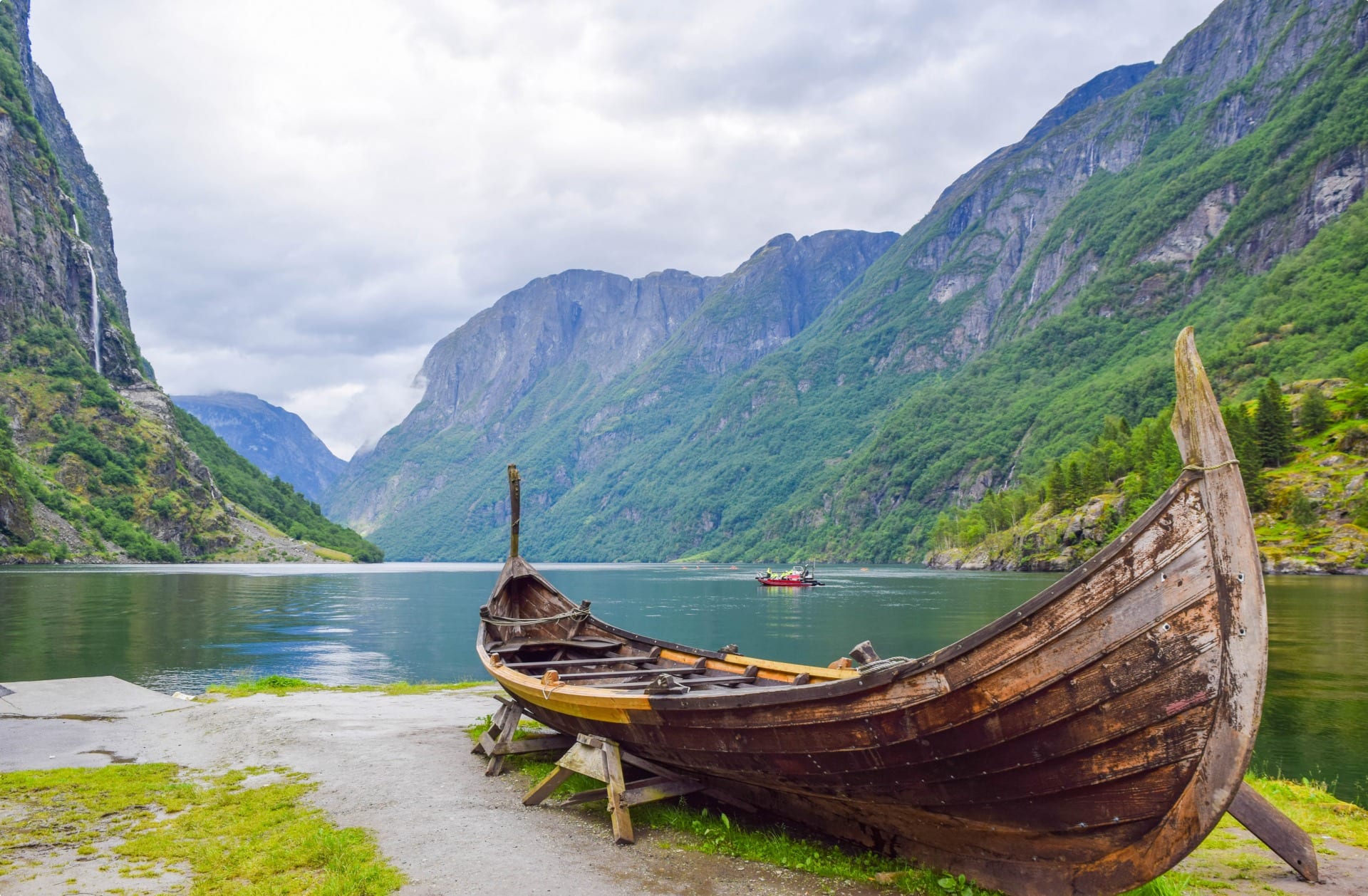
Viking Trade
With the capability to build bigger and more seaworthy ships came opportunities for the Vikings to venture further afield, not only to raid and loot but also to trade. Many left their homelands to discover or open new trade routes and establish a more secure foundation for income. In time trade flourished during this period as one of the more peaceful activities undertaken by the Vikings.
The traders went as far west as Greenland and Newfoundland in the New World, while the Volga and Dnieper River Trade Routes connected them eastwards to Constantinople, Jerusalem, Baghdad, and the Caspian Sea, and the end of the Silk Road. Generally, those from Sweden traded eastwards, while the Norwegians and the Danes went to Ireland, Scotland, England, and France. Several trade routes through Central Europe and Iberian Peninsular also connected Scandinavia with the Mediterranean.
The Vikings traded goods of the north such as amber, iron, whalebone, walrus ivory, wheat, wool, honey, tin, and various types of fur and hides. In return they received goods needed from other places, such as silk, spices, glassware, fine textiles, pottery, and weapons.
Historical sources reveal that there was also an extensive trade in slaves. This was one of the important trade items for the Vikings, both bought and sold throughout the trade network. They were usually of great importance for both the monetary and labour value and could be used to pay off debts or as human sacrifices in religious ceremonies.
Trade was most usually accomplished by the direct exchange of one type of trade goods for another (known as barter). Often the same types of easily measured commodities were exchanged, such as textiles, beads, and furs. However, the most widespread form of exchange appears to have been bullion, primarily precious metals such as gold and silver due to their durability.

Although bullion lacked the standardization (and the guarantee of quality) implicit in coinage, it had greater flexibility. In addition to imported coins, the main forms of bullion were ingots (blocks of cast metal), and cut fragments of silver, known as hack silver. Gold and silver could also be used in high status display items, such as personal ornaments and weapon-fittings.
Often transactions carrying goods over very long distances were conducted through a chain of middlemen, meaning items could be carried from one side of the Vikings’ world to the other. The Island of Gotland, for example, was an international marketplace and a key point on the east-west axis from Scandinavia to Islamic Lands. Over 145,00 coins from the Islamic World, England, and Germany have been discovered here, as well as silver jewellery, hack silver and ingot in abundance.
Viking Towns
Before the Viking Age, there were no real proper towns in Scandinavia, in which a large permanent population made a living fashioning and selling a variety of non-agricultural goods. Rather, people tended to live and work in small farming or fishing villages. Even throughout the more civilised parts of Europe, towns were relatively rare.
As the Vikings began raiding and trading into Europe and Russia during the 8th and 9th centuries, the first towns started to develop as trading centres established by local kings. They were designed to ensure traders and their valuable goods were safe, so that the kings could tax the traders’ goods for the use of land and protection. At first, they appeared in central locations along Scandinavia’s coasts, near to natural harbour or on fjords, before developing more or less simultaneously across the Viking world along main trading routes.
Two of the first commercial centres, Ribe and Hedeby (now in Germany) developed in Denmark, while Sweden had the major urban site of Birka, and Norway had Kaupang. Each began as trade centres, strategically located in easy-to-protect harbour near natural trade routes, before developing into actual towns. Other smaller trading sites also existed across Scandinavia, although it seems the number of ‘true’ towns engaging in international trade was always relatively small.
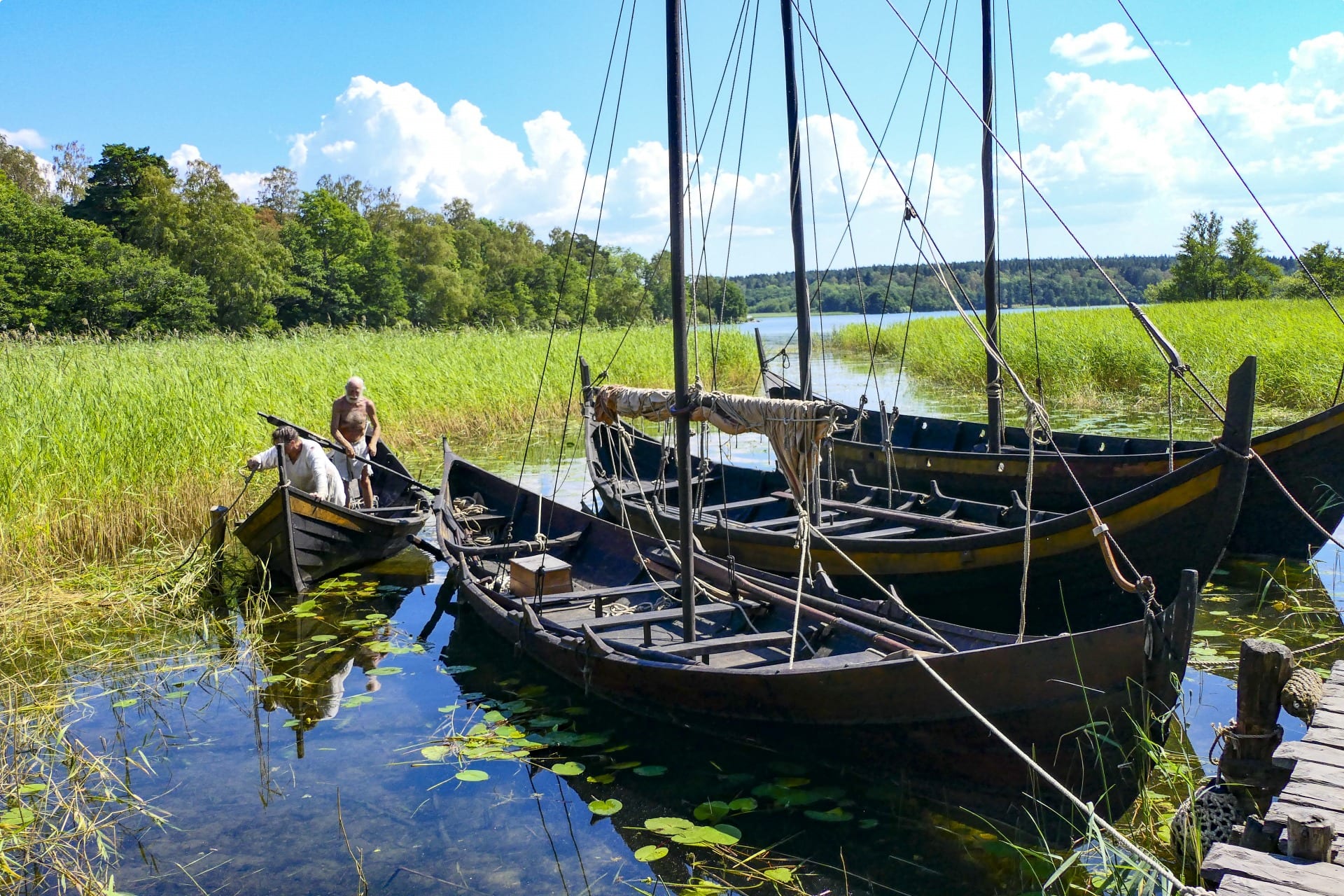
A key aspect of all towns is the fact that most of the population engage in non-agricultural activities. Indeed, it was the professional craftsmen and traders who lived in the Viking towns, with the economies dominated by production and trade, both of which occurred on a substantial scale. Talented blacksmiths, bronze casters, bead makers, glassblowers, jewellers, potters, leatherworkers, weavers, dyers, and more were all attracted to the towns. Farms outside of the towns meanwhile produced the food the townspeople ate and raw materials urban craftsmen relied upon.
New Settlements in the North Atlantic
While some Vikings were seizing foreign wealth through raids or trade with long established, prosperous, and well-populated kingdoms, others were setting their sights on undiscovered lands across the Atlantic Ocean.
Seaward voyages of discovery initially brought them to the shores of the Faroe Islands in the 9th century. Then from here, over the next two centuries, aided by increasing sophistication in ship-building techniques, Viking explorers were lured further to explore the horizons of their world and extend its boundaries. First, they settled in Iceland, then Greenland, and eventually made it as far as Vinland on coastal North America south of Newfoundland.
The Faroe Islands
The Faroe Islands are a group of 18 small volcanic islands sitting on the North Atlantic, 320 kilometres (200 miles) north-west of Scotland and about halfway between Iceland and Norway. The Vikings are believed to have reached the islands, either as transient pillages or permanent settlers, by 825.
Hall writes, “The Faeroes were attractive to Viking settlers because, isolated though the islands were, they included places where crops could be grown, and the mountains provided ample grazing. The cliffs teemed with a profusion of seabirds that could provide eggs and meat, and the seas were abundant with fish, whales and seals.”
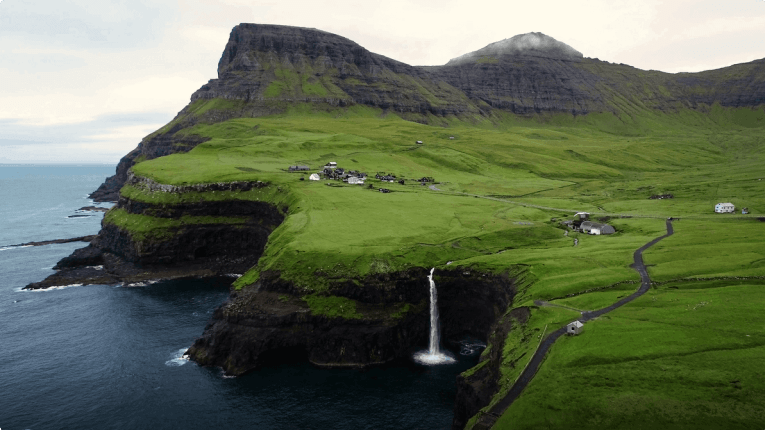
The settlers formed a polity with its own constitution, originally founded on the ancient Viking traditions of the 9th century. They also established a parliament (Althing, later Løgting) in Tórshavn, the capital city, then and now, of the Faroe Islands. This makes the Faroese parliament one of the (if not the) oldest existing parliaments in the world.
Modern-day knowledge about these Viking settlers in the Faroes comes largely from a variety of archaeological finds. One of the earliest recorded discoveries occurred in 1863, when grave diggers on the island of Sandoy found a hoard of silver that had been buried in c. 1100. The hoard consisted of a silver amulet and 98 coins from England, Ireland, Denmark, Norway and Hungary. Although the islands may appear remote, this find indicated that they were clearly connected to the trading networks of the Viking world.
The fullest picture of the Faroese Viking agricultural lifestyle comes from excavations in the 1980s at Toftanes, an ancient settlement site at the village of Leirvik on the east coast of the island of Eysturoy. Here, a preserved longhouse dated to the 9th and 10th centuries was unearthed with its walls intact.
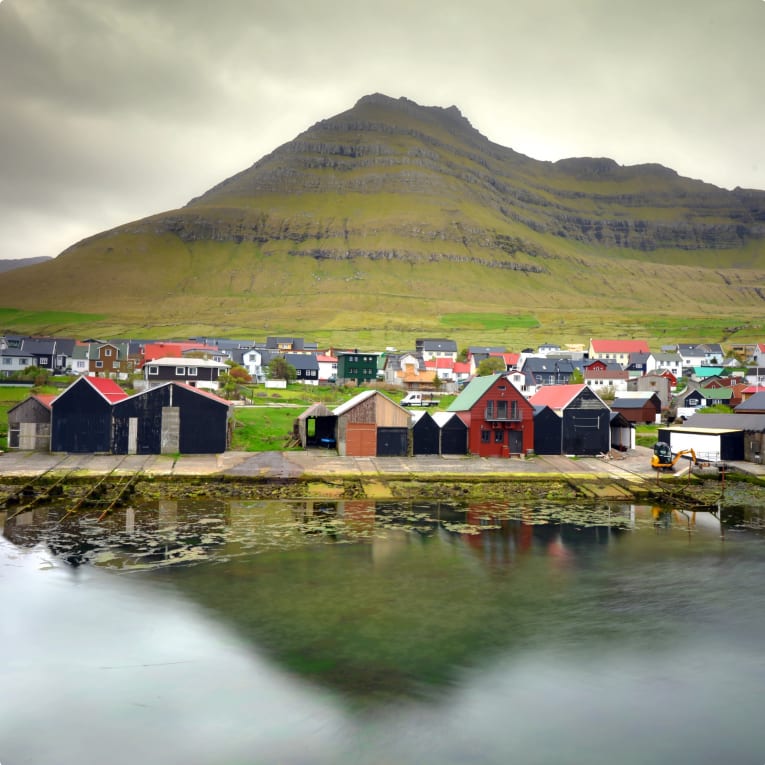
The structure was made from stones, with turf stacked between to provide insulation, and measured 20 x 5 m. A large rectangular heath in the western half of the building shows this was where the family congregated. Three smaller buildings of varying dimensions were also found around this longhouse, but their functions are uncertain.
Several thousand objects, representing the debris of everyday life, were found in and around these buildings. Animal bones showed that their diet consisted of some cattle products, but sheep were the most common farm animal. Meanwhile, soap-stones (imported from Norway or Shetland) were used to make a variety or items, such as cooking vessels and weight for fishing lines and nets.
Imported minor luxury items were also found, including a jet arm-ring from England, a bronze disc brooch and beads of glass or amber form Scandinavia. There was also a surprisingly large collection of wooden items, including building materials, domestic utensils ranging from spoons to barrels, and gaming pieces.
Iceland
Iceland lies marooned at the top of the globe, ‘hanging’ from the Artic Circle 500km (300 miles) northwest of the Faeroe Islands. At the time of the Viking settlement, it was the world’s largest uninhabited island.
The Vikings first came across Iceland in a series of voyages in the mid-9th century before colonists led by Ingólf Arnarson settled on the island in 872. Ingólfr, a pious and god-fearing man, threw two carved pillars overboard as he approached the land and vowed, he would settle wherever the pillars landed. He sailed along the coast until the pillars were found in where is now known as Reykjanesskagi. He settled there with his family in a place he named ‘Smoke Cove’ (Reykjarvik), most likely due to the geothermal steam surrounding the area. This spot is now the capital of Iceland: Reykjavik.
Between 870 and 930, somewhere between 10,000 and 20,000 people made their way to Iceland. Many were from Norway with many Norse chieftains, their families and slaves settling habitable areas of the land. It is believed that many went to Iceland to escape the oppressive regime of King Harald Fairhair. Danes, Swedes and those of Irish and Scottish origin were also colonists, and today DNA testing shows that 2/3 of modern male Icelanders are of Norse descent and 1/3 are of Celtic descent.
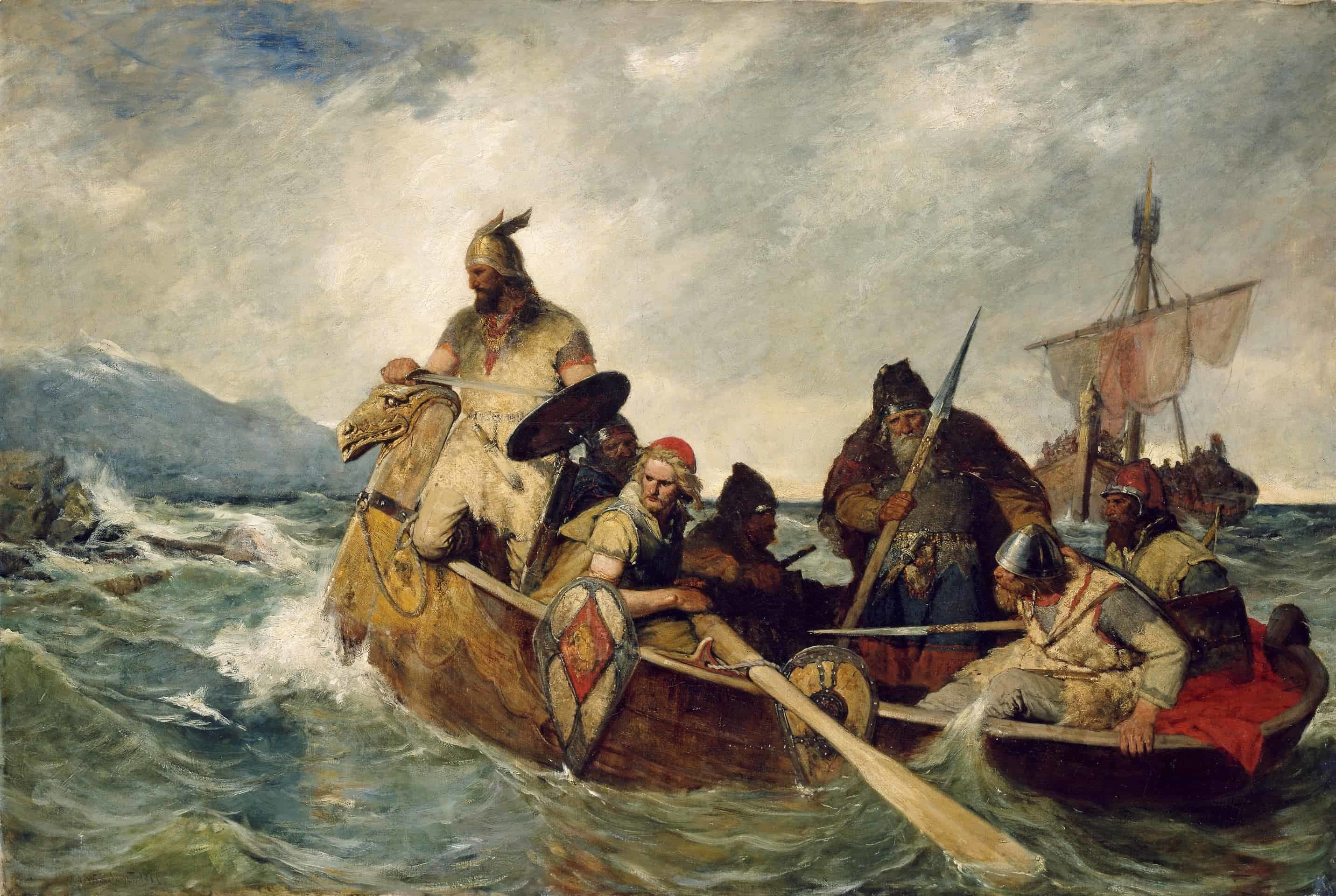
For the first century of the island’s recorded history, many Icelanders were pagan and worshiped the Norse gods, among them Odin, Thor, Freyr, and Freyja. Pagan worship was organised around a class of chieftains known as godar and there were around 40 godar who ruled over their own goðorð (county) or the area around their farmstead.
The godar formed the ruling class in the country and in 930 they established an assembly known as the Althing. This parliament convened each summer and the godar would amend laws, settle disputes and appoint juries to judge lawsuits. Hall writes on the Althing:
“The impulse which led to its inauguration is more plausibly explained by a sensible desire to establish a single set of rights and customs in a land of dispersed settlements, where local idiosyncrasies could potentially spring up and become an unwitting cause of friction.”
Indeed, archaeological evidence suggests a more egalitarian society than the ones the Icelanders had left behind in Scandinavia or the British Isles. Goods at unearthed graves do not include spectacularly rich assemblages and the graves themselves did not stand out as monuments in the landscape. The farmhouses are also mostly of similar dimensions, and the collection objects recovered from excavated Viking houses share the same, generally rather ordinary, appearance.
Archaeological evidence also reveals that life on a 10th century farm in Iceland was focussed on stock rearing and supplemented by fishing and hunting gamebirds. Simple tools and equipment were produced from local sources, with the prevalence of lava used to make lamps, querns and other basic-everyday items.

Greenland
By the late 10th century, Vikings had begun using Iceland as a platform for further explorations westwards. In 982, Erik the Red, banished for three years from Iceland from manslaughter, set sail in this direction after hearing rumours of a great land. Only 300km (200 miles) away from Iceland, he discovered the world’s largest island and explored its southwest coast. When he returned to Iceland, he bragged of the good land he had found, calling it Greenland in some sort of medieval marketing ploy to entice people to settle on an island with a “favourable name”.
Soon he led 25 ships carrying would-be settlers to their new home, establishing two main settlements in south Greenland: the East Settlement, near present-day Qaqortoq, and the West Settlement, near present-day Nuuk, the capital.
At this point, the native Dorset people had been living in the Artic for hundreds of years, along with other Paleo-Indian and Paleo-Eskimo groups. They are believed to have crossed to Greenland from North America in a series of migrations via the islands of the Canadian Arctic, crossing a frozen land bridge of sorts that formed when the sea froze in northern Greenland. (Canada’s Ellesmere Island is only 20 kilometres away from Greenland’s northwest coast.)
They may have never actually met the Vikings though. Hall explains, “By the time the Vikings arrived, the onset of warmer conditions was encouraging the Dorset Paleo-Indian people to vacate Greenland, and it may be that the early Viking Greenlanders and the Dorset people rarely, if ever, came face to face in and around the settled areas.”
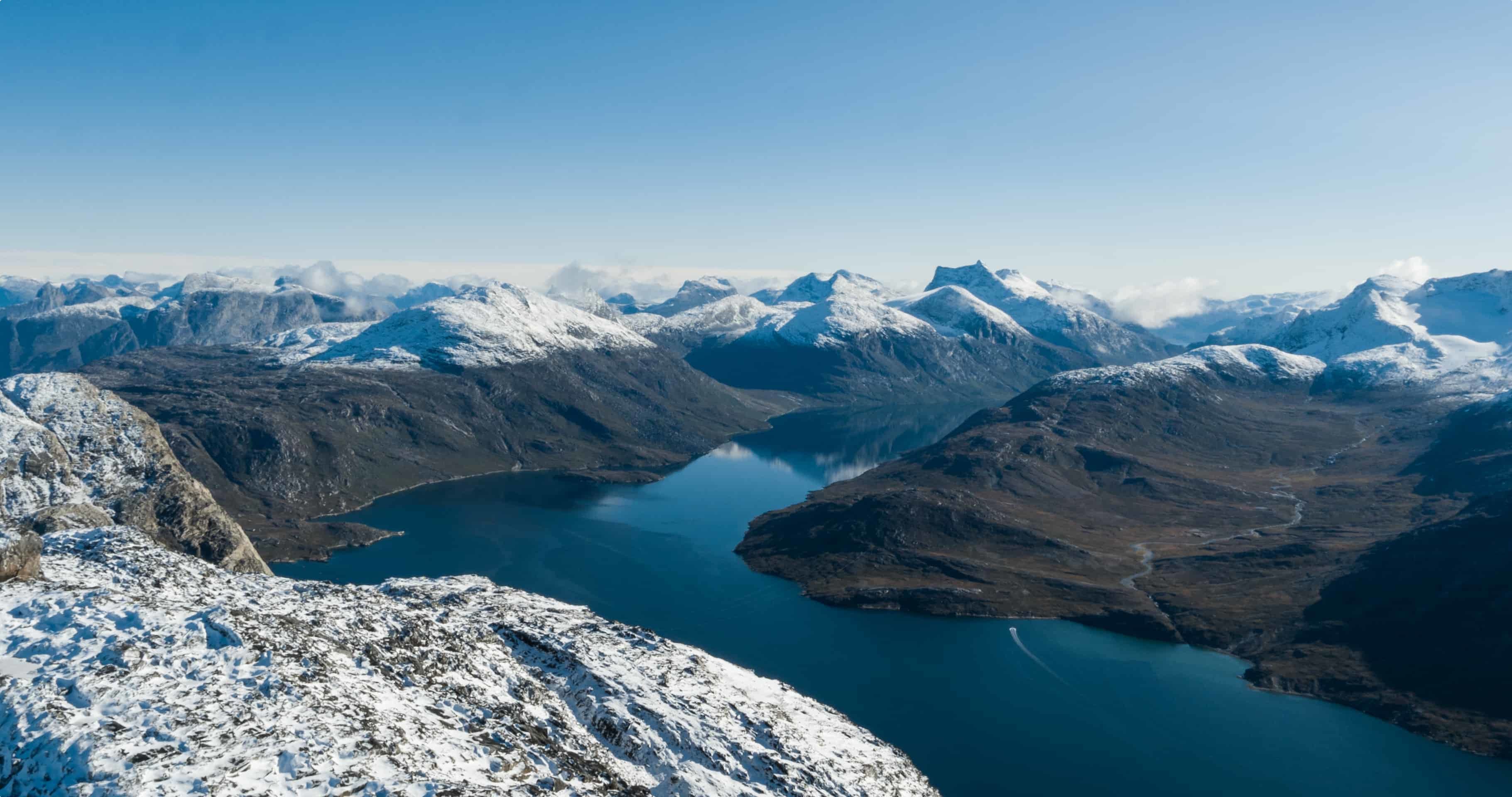
Altogether, the sites of about 400 Norse farms have been located in the Eastern Settlement and about 80 in the Western, although it’s not certain that all were occupied simultaneously. Never intended to be a densely populated landscape, it has been suggested there were roughly only about 2,500 settlers at the zenith of the Greenland colony.
Farming was difficult in the colony, with the immigrant Greenlanders having to adjust their accustomed practices in order to ensure their survival. Nevertheless, they were able to raise livestock and enough grain to feed them.
Cattle and sheep were the principal farm animals in both areas, while goats were also common in the Western Settlement, which was better suited to their omnivorous habits. Hunting walrus, seal, and caribou as sources of food was also important for both communities. Walrus was also hunted for their hides, used to fashion ropes which were so important for the settler’s ships, as well as their tusks, with ivory a luxury commodity which commanded a high price abroad.
Vinland
According to the Viking sagas telling of further journeys westwards from the Greenland colonies, the Vikings may have been the first Europeans to discover and explore North America – almost 500 years before Christopher Columbus.
It is said that a Viking Greenlander trader named Bjarni Herjolfsson sighted lands to the west in 986 after being blown off course sailing to Greenland. Having heard the news, Erik the Red’s son, Leif Erikson, and his crew set sail across 2,900 km (1,800 miles) of open sea to retrace Bjarni’s route.
Along the way, Leif gave names to the different areas he encountered, including Helluland (widely believed to be part of Baflin Island), and Markland (widely believed to be an expanse of the Labrador coastline). Eventually, he located a more congenial place to base camp and spent the winter there. One of his crew, a German, is credited with recognising the wild grapevines that promoted Leif to name the area Vinland (‘Wineland’).
Following Leif’s expedition, the Greenlanders returned to Vinland to start a new colony. However – unlike both Iceland and Greenland – it was already settled and the Vikings soon encountered hostile native Americans. This combined with the investment of manpower necessary to sustain a viable settled community was too much for the small population of Greenland, and so the Viking occupation there did not last long.
For centuries, the sagas lay testimony to the Viking’s settlement of Vinland, however the location remained elusive, and it was even unclear if the Vikings really had reached North America. Then in the early 1960s, a Norwegian explorer Helge Ingestad and his archaeologist wife Anne Stine found the remains of an ancient Norse settlement at L’Anse aux Meadows on the northern tip of Newfoundland. Excavations by Anne Stine during 1961-68 revealed 8 buildings in total, with about 125 artefacts that were clearly not in the native tradition.
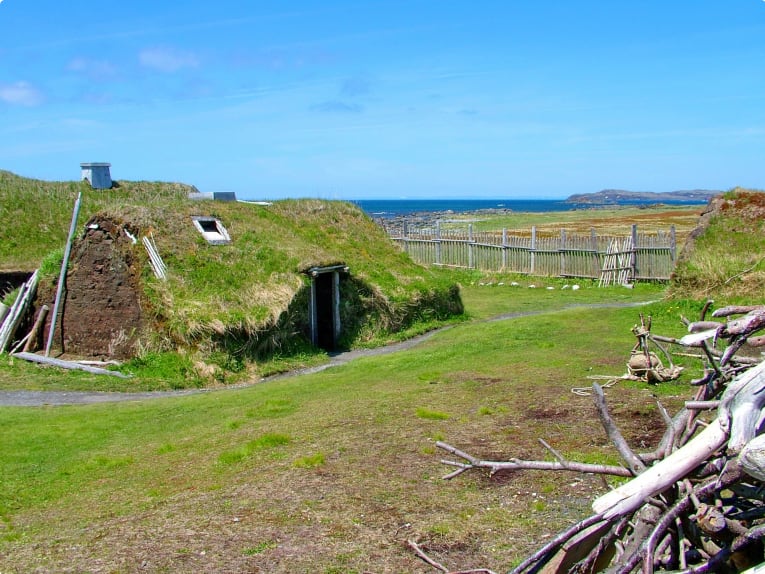
The vast majority of these objects were iron nails, which the native population did not possess the technology to produce. A copper-alloy dress pin, of the style widely distributed throughout the western sector of Viking activities, was also found. As was a glass bead, a soapstone spindle-whorl, a fragmentary bone needle, and whetstones – all of which are characteristic of Scandinavian occupation sites elsewhere, confirming the occupation was dated to the Viking Age.
Later excavations further revealed preserved organic objects in boggy areas, among them carpenters’ wooden debris, lengths of rope made form spruce roots, and a birch-bark container. All of these are acceptable in a Viking Age context. A series of radiocarbon dates then confirmed this site was occupied in the period 980-1020, dates compatible with the tales in the sagas.
The recovery at the site of three butternuts (white walnuts), which have never grown north of the St Lawrence valley, show that foodstuffs were being gathered from 800km (500 miles) south of L’Anse aux Meadows. It may have been there too that grapes were found, as vines do not grow in north Newfoundland.
This suggests Vinland extended further south to include the south part of the Gulf of St Lawrence, including New Brunswick, Nova Scotia and, perhaps, Maine. The L’Anse aux Meadows site is believed to be too small to be the main Vinland colony and most likely rather functioned as an explorers’ and exploiters’ base. However, it remains the only confirmed Norse site in or near North America, aside from Greenland.

End of the Viking Age
The end of the Viking Age is usually dated to the failed invasion of England by King Harald Hardrada of Norway in 1066. Soon after, William, Duke of Normandy, would take England’s throne, retaining the crown in spite of further Danish challenges. Somewhat ironically, William was a descendant of Scandinavian settlers in northern France – the great-great-great-grandson of Rollo, a Viking.
However, so many aspects of society had changed by then, both in the Scandinavian homelands and in settlements abroad, that the Viking character of these areas had arguably already faded. By about 1000, much of Scandinavia was nominally Christian, and the Viking culture was being absorbed into the culture of Christian Europe. United kingdoms had also appeared in Denmark, Norway and Sweden by the mid-11th century, and the raids had finally begun to subside.
The Scandinavian settlements and colonies abroad too were gradually adapting to changing circumstances. Already, by 1066, the Norsemen of Normandy had evolved into Normans, adopting the French culture of their neighbours, and the Viking states of Russia had taken on a Slavic character.
Iceland maintained its independence for longer, but eventually fell under Norwegian control in the mid 13-th century. Norway also annexed Greenland around this time, imposing a trade monopoly. Conditions then slowly depleted the settlements to the point they were wholly abandoned in the early to mid-15 centuries.
Just as Norway was formally taking over Iceland and Greenland, it was losing control of its possessions in the Hebrides, off the west coast of Scotland. By 1468-69, it had surrendered its further possessions of the archipelagos or Orkney and Shetland to the Scottish kind. Hall argues that with this handover “the political legacy of the Viking Age was largely exhausted”. The Viking world was no more.
Scandinavia Viking Tour
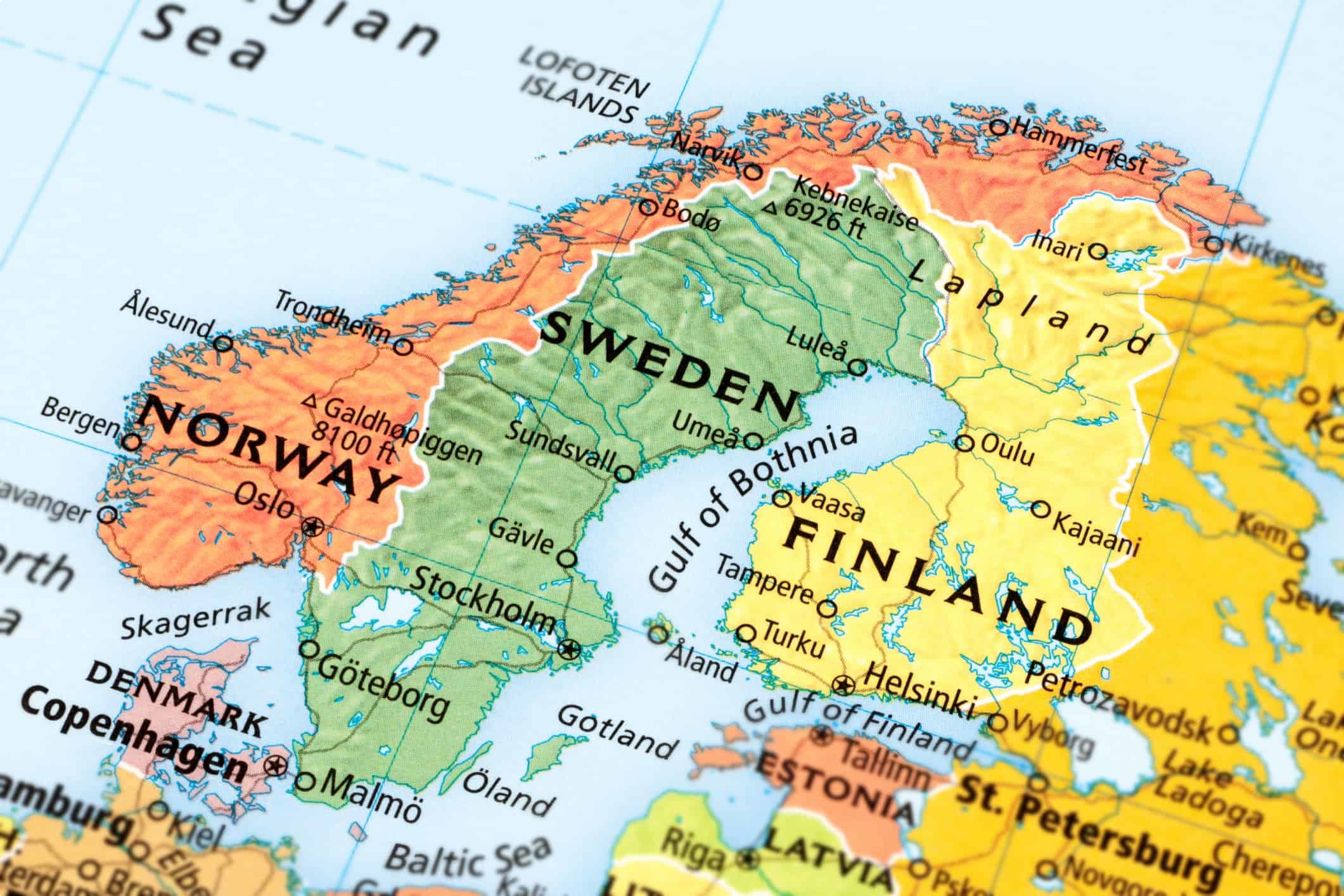
During Odyssey Traveller 13-day tour in Scandinavia, we explore Denmark’s, Sweden’s’ and Norway’s ancient Viking heritage, World Heritage Sites, and charming Nordic cities, with some truly spectacular scenery along the way.
What these Scandinavian countries share in common is their natural beauty, and vibrant, unforgettable cultures. In low-lying Denmark, we visit meticulously maintained urban centres, including the vibrant capital of Copenhagen. We then continue our sightseeing tour and adventure in Sweden and its capital, Stockholm, now the financial capital of the region. Finally, after Sweden, we travel to Norway, famous for its breath-taking Norwegian coastal voyage favoured by tourists. Here, we journey over magnificent mountains and skirt picturesque fjords of Norway to reach Bergen.
Our Scandinavian tour also visits the Christiansborg Palace (outside visit), housing the Danish Parliament; the Vasa Museum; Vigeland Sculpture Park; and the old canal area, Nyhavn, with its picturesque houses and vessels and beautiful landscapes. This and more are all waiting to be explored on one of Odyssey’s small group tours of Denmark, Sweden, and Norway. Designed for the senior traveller, and led by experienced, and enthusiastic likeminded people.

We also explore Viking history during our tours in the lands of Viking settlements, including our:
- Discover Greenland Small Group Tour (5 days)
- Faroe Islands Small Group Tour (5 days)
- Iceland Cultural and Wilderness Small Group tour (17 days)
Odyssey Traveller has been serving global travellers since 1983 with educational tours of the history, culture, and architecture of our destinations designed for mature and senior travellers. We specialise in offering small group tours partnering with a local tour guide at each destination to provide a relaxed and comfortable pace and atmosphere that sets us apart from larger tour groups. Tours consist of small groups of between 6 and 12 people and are cost inclusive of all entrances, tipping and majority of meals. For more information, click here, and head to this page to make a booking.
Articles about Scandinavia published by Odyssey Traveller:
- Discovering Scandinavia & Viking Denmark for Tourists
- Photographing the Northern Lights
- Questions About Norway
- Exploring the Faroe Islands
- Questions About Sweden for Senior Travellers
External articles to assist you on your visit to Scandinavia:
- Where is Scandinavia? A Guide to the Scandinavian Countries
- Tips for Visiting Southern Norway: The Norwegian Riviera
- The Best and Most Beautiful Fjords in Norway – Nordic Visitor
- The Scandinavian Invasions of Britain
For all the articles Odyssey Traveller has published for mature aged and senior travellers, click through on this link.
Related Tours
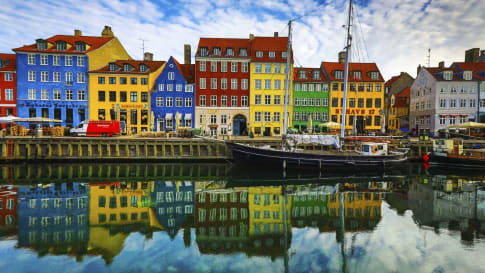
13 days
Jun, SepScandinavia tours for mature travellers
Visiting Denmark, Norway
Uncover on a small group tour for couples and solo travellers, a Viking past and view of the world’s biggest fjords on this journey through Scandinavia. In low-lying Denmark our small group journey takes us to visit the Zeeland, the sea land, and our program includes the vibrant capital of Copenhagen. In Norway we travel through endless forests, skirting great fjords to Bergen.
From A$14,995 AUD
View Tour
17 days
May, SepIceland cultural and wilderness small group tour
Visiting Iceland
Our escorted tour gives guests an insight into the history of this Icelandic nation. Travelling as a small group, our daily itineraries explore the Jokulsarlon Glacier Lagoon and others, national parks and majestic waterfalls as we learn about Iceland’s natural heritage and its Viking past from experienced local guides. There is a single supplement for solo travellers.
From A$18,995 AUD
View Tour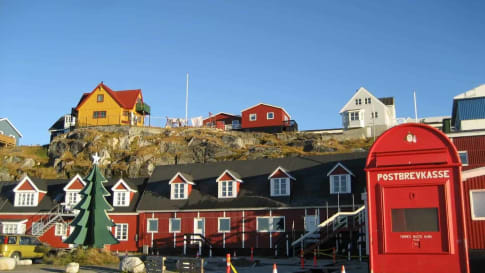
4 days
Sep, MayDiscover Greenland | Small Group Tour for Seniors
Visiting Greenland
Greenland is the largest island in the world, the majority of it lies above the Arctic Circle, and it is part of Denmark. Few places are quite so difficult to reach, we fly from Reykjavik to Nuuk. During this small group tour we have ensured that our travellers gets to this conversation-stopping land and, while we are there we obtain the most comprehensive overview of this vast landmass. We visit during the summer, experiencing the burst of seasonal flora, which caused the early voyagers to name it Greenland.
From A$6,450 AUD
View Tour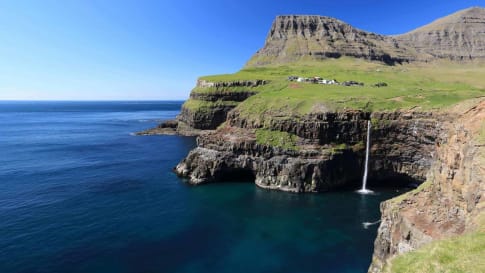
5 days
Apr, SepFaroe Islands Tour
Visiting Denmark
Few European tour companies offer small group journeys to the Faroe Islands. This five-day small group tour designed for mature couples and solo travellers. Local guides take you on trips off the beaten path to visit some of the islands' most stunning sights and to explore the capital of Tórshavn.
From A$7,250 AUD
View TourRelated Articles

Discovering Scandinavia & Viking Denmark for tourists
Discovering Scandinavia Discovering Scandinavia. In this article, we will learn about Denmark with a focus on Viking history, and uncover highlights of Copenhagen. Click here to read our article focusing on Sweden. Small group tours…

Exploring the Faroe Islands: The Definitive Guide for Travellers
The Faroe Islands, far far away Tjornuvik village, Faroe Islands The Faroe Islands (also called the Faroes or Faeroes) is a self-governing region of the Kingdom of Denmark, a group of 18 pristine volcanic islands…

Sami culture within the Vikings
Article about the Sami culture of the Arctic circle for small group educational tours for senior couples and mature single travellers interested in learning about the Vikings and their journeys into the Atlantic and south across Russia.

The Arctic Circle
The Arctic Circle is the most northernly major circle of latitude, at approximately 66°30′ N. It marks the area within which, for one or more days each year, the Sun does not set (June 21) or rise (December 21), and the length of continuous day or night increases northward.

The Viking's Woollen Sails
Vikings and Their Use of Wool for Sails This educational article aims to help senior travellers immerse in the world of Vikings before they take part in a memorable travel experience across Scandinavia. It helps…
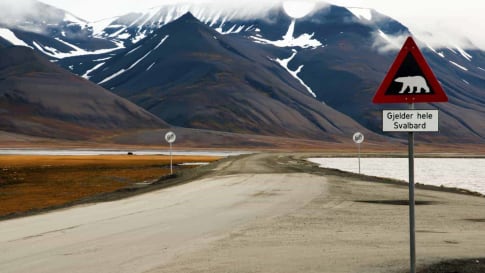
Understanding Greenland
Greenland recognises the devastating effects of climate change and continues to push for responsible and sustainable tourism.
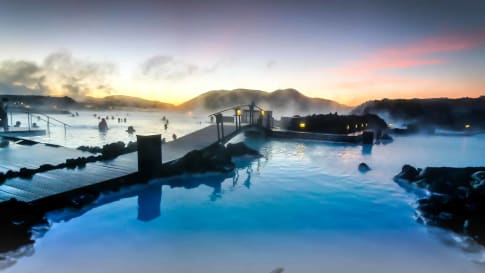
The History of the Settlement of Iceland
Marooned at the top of the globe, somewhere in the North Atlantic Ocean, lies the island nation of Iceland, a land of vivid contrasts where nature reigns supreme in her most dramatic form. Iceland is the world's oldest democracy and boasts more writer's per capita than any other country in the world. It is said that many Icelanders still believe in the mythical figures of the Norse past, such as elves, trolls and fairies, which may be due to the country's literary history including its famous sagas, epic tales based on Iceland's settlement from around 9-11 AD.
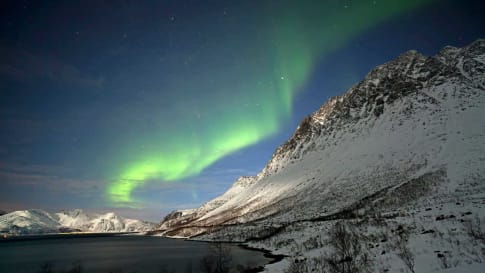
Questions about Norway for senior travellers
Escorted small group tours for mature and senior travellers to Norway. Designed for couples and solo travellers who like to explore and enjoy learning about the woollen sails of the Vikings, photographing the Northern lights as they travel to Oslo, Tromso, or the arctic circle.
Questions about Sweden for senior travellers
Questions About Sweden for senior travellers Odyssey Traveller specialises in crafting unforgettable experiences for senior and mature-aged travellers interested in learning whether travelling as a couple or as a solo traveller. Providing adventure and educational programs to escorted small…
